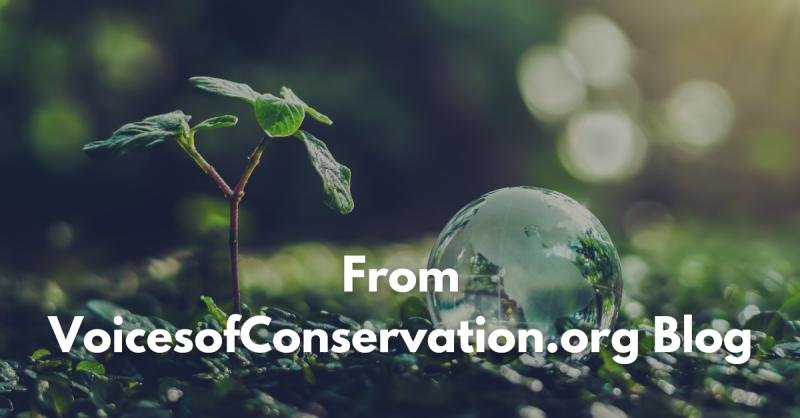Introduction
This blog unpacks practical strategies for adopting sustainable practices, tailored for both individuals and communities. Whether you’re looking to cut down on waste, save energy, or contribute to a cleaner world, these ideas will help you take meaningful steps. The From voicesofconservation.org blog platform, dedicated to sharing stories and tools for sustainability, serves as our guide on this journey toward a greener future.
Understanding Sustainability
What is Sustainability?
Sustainability is like tending to a garden—you nurture it now so it flourishes later. At its core, sustainability is about balancing environmental care, economic growth, and social equity. These three pillars form the foundation of every effort aimed at ensuring long-term harmony between humanity and nature.
This approach isn’t just about grand gestures. It’s about choices—small, consistent actions that ripple outwards, touching everything from how we shop to the energy we use.
Why Sustainable Practices Matter
Imagine pouring water into a bucket with a hole. That’s what our current resource use feels like—wasteful and unsustainable. Sustainable practices offer the tools to plug those holes. They help reduce carbon footprints, conserve finite resources, and protect the biodiversity that keeps ecosystems ticking.
What’s more, sustainability has economic and social benefits. From creating green jobs to improving community health, it’s not just the environment that wins; people do too.
Key Sustainable Practices (From voicesofconservation.org blog)
Renewable Energy Adoption
Imagine this: your home powered by the sun, your car charged by the wind. Renewable energy sources like solar, wind and hydropower are the future. They reduce our dependence on fossil fuels, reduce greenhouse gas emissions and create a cleaner healthier world.
Transitioning to renewable energy doesn’t just benefit the planet – it saves you money in the long run. Imagine slashing your electricity bills with solar or powering entire towns with wind. It’s a win win for the planet and your wallet.
Energy Efficiency
Do you leave the lights on when you leave a room? Guilty as charged. But here’s the thing – small changes in how we use energy can make a big difference. Energy efficient appliances, smart thermostats and LED lighting are small investments with big returns.
Reducing energy waste isn’t about living in the dark. It’s about using technology to work smarter not harder. Every kilowatt saved gets us closer to a sustainable future.
Waste Reduction and Recycling
Waste not, want not – this old adage is truer than ever. Recycling programs, composting and mindful consumption are the building blocks of good waste management. By rethinking how we dispose of products we can extend their life and reduce the burden on landfills.
The circular economy takes this to the next level, designing systems where materials are reused, repurposed or recycled endlessly. Imagine a world where waste is the raw material for new products – a world where nothing goes to waste.
Sustainable Agriculture and Food
How far does your food travel before it gets to your plate? Supporting local food systems isn’t a trend – it’s a sustainable practice. By reducing food miles and going organic we can make mealtimes greener.
Sustainable agriculture – from crop rotation to agroforestry – builds soil health and reduces our dependence on chemical fertilizers. It’s a return to farming practices that respect the land so it can provide for future generations.
Water Saving Techniques
Water is life but we treat it like it’s endless. Simple measures like rainwater harvesting, efficient irrigation and fixing leaks can cut water waste dramatically. Imagine a community where every drop is precious – where water is treated like the precious resource it is.
For many areas water scarcity is a looming issue. By saving water today we’ll have it tomorrow.
Green Transport Solutions
Cars get us from A to B but they’re also one of the biggest contributors to air pollution. Public transport, cycling and walking are greener ways to commute – and often healthier too. For longer distances electric vehicles are becoming more accessible and affordable.
Think of green transport as a breath of fresh air – literally. Fewer emissions mean cleaner air and healthier lungs.
Green Building
Buildings can be more than just bricks and mortar – they can be the solution. Green building – using sustainable materials and energy efficient design – creates spaces that are good for the planet and the people living in them.
From bamboo flooring to solar-paneled rooftops, eco-friendly homes are built with the future in mind.
Community Engagement in Sustainability
The Role of Communities in Promoting Sustainability
Sustainability starts at home but thrives in communities. Local initiatives, like tree planting drives or neighborhood clean-ups, create a ripple effect. They inspire others, build camaraderie, and showcase what’s possible when people come together.
Communities bring a unique perspective to sustainability efforts. They know their needs, resources, and challenges better than anyone else. By tapping into this local wisdom, we can design initiatives that work.
Case Studies of Successful Community-Led Projects
Take a small town in Brazil, where residents transformed a waste-filled river into a thriving ecosystem. Or a village in India that switched to solar power, cutting costs and improving livelihoods. These stories aren’t exceptions—they’re proof of what’s possible when communities take charge.
Educational Initiatives and Workshops
Knowledge is power. Workshops, school programs, and local campaigns are essential for spreading awareness about sustainable practices. Education turns passive spectators into active participants, sparking change one person at a time.
Challenges to Implementing Sustainable Practices
Common Barriers to Adoption
Let’s face it—change is hard. Lack of resources, awareness, or incentives can make sustainability feel like an uphill climb. Sometimes, it’s not that people don’t care—it’s that they don’t know where to start.
Strategies to Overcome These Challenges
The answer lies in collaboration. Governments can offer subsidies for green technologies, businesses can adopt sustainable supply chains, and individuals can make conscious choices. Together, these efforts can clear the path for a greener future.
The Future of From voicesofconservation.org blog
Emerging Trends in Sustainability
Technology is rewriting the rules. From smart home systems that optimize energy use to AI tools that monitor water usage, innovation is making sustainability more accessible. These advancements are turning yesterday’s dreams into today’s reality.
The Importance of Collective Action
No one can save the planet alone. It takes a village—businesses, governments, and individuals working hand in hand. When everyone plays their part, sustainability becomes a shared achievement.
Conclusion
From voicesofconservation.org blog are the bridge between where we are and where we need to be. They empower individuals, strengthen communities, and protect the planet for future generations.
The journey to sustainability isn’t about perfection—it’s about progress. So, whether you start by recycling, planting a tree, or switching to clean energy, every action counts. Let’s build a greener, brighter future together. Are you ready to make a difference?






